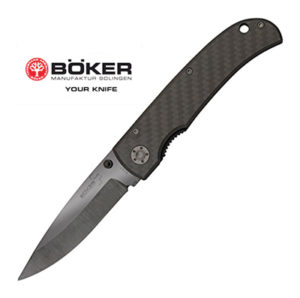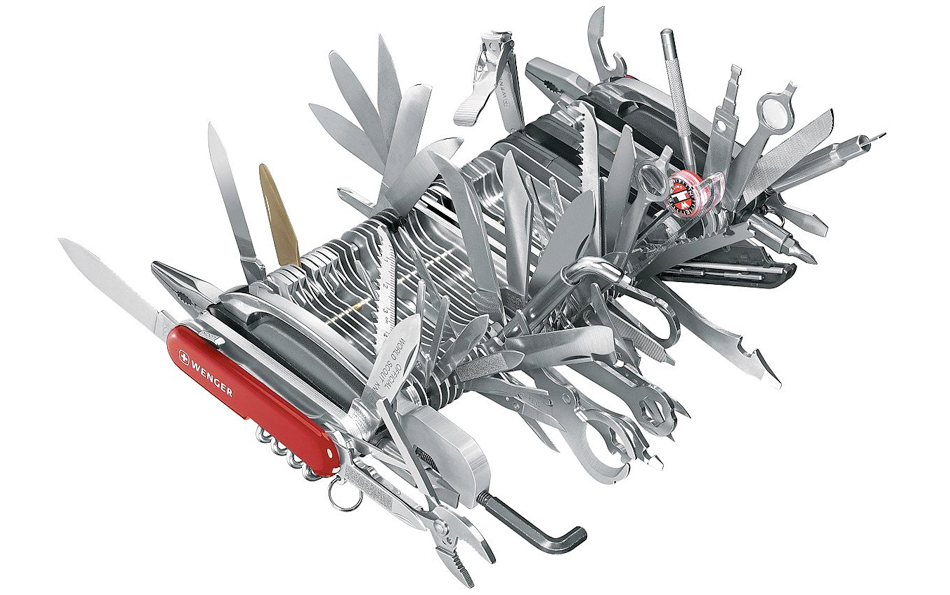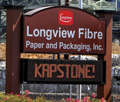A strategy for Product Rationalization
Learning when to use a less is more attitude is extremely important when you are ready for a Product Rationalization Strategy. Rationalization is all about pruning your products down to the most profitable. Here is a great example of what not to do: meet the Wenger 16999 Swiss Army Knife Giant. It costs $1500.
It is so giant that it’s rediculous. It is not handy, and does not fit in any pocket. A kangaroo would be challenged finding room in her pouch.
There are so many options, it’s practically useless. Plus it’s expensive, and inconvenient. That’s a lot of money to pay for a tool that isn’t producing the desired results.
This might be your crowded warehouse. Your company might have too many tiny cogs and without a plan, you can’t build a functioning clock.
This is where Product Rationalization Strategy comes in. Product Rationalization is a process of reducing the amount of products you sell so that you can focus and invest more on products that generate the most revenue.
Rationalization will maximize your revenue for each product when you have a minimum number of products reaching the maximum number of customers.
A good consultant will have a strong methodology for organizing, gleaning, and implementing a Product Rationalization Strategy. There are several steps to break down your strategy:
- Assess 2) Establish Goals 3) Track Progress 4) Re-evaluate 5) Repeat
ASSESS
In 1909 An Italian economist Vilfredo Pareto noticed that 80% of the land was owned by 20% if the people. Thus the Pareto, or 80/20 principle was born. The principle states that 80 percent of results come from 20 percent of the action. Or 20% input, creates 80% output.
You’ll see examples of this everywhere and even in your personal life. It’s not a hard and fast rule, it could be 90/10 or 75/25 but you get the point. Your results will always be strangly close to 80/20.
For example:
You usually wear 20% of your clothing 80% of the time. In England, 80% of the population lives in 20% of it’s cities, 80% of your profits come from 20% of your customers. 20% of your product (or service) sales generate 80% of your revenue.
Let’s pay attention to that last one. Thoroughly analyze your SKU’s to target which products (or services ) are performing and which ones need to be eliminated.
However, be careful not to be too overzealous when it comes to retiring a product or service. You could damage your revenue streams if you cut too deeply.
A professional consultant is capable to valuate your gaps, giving insight with a wider lens. It’s often difficult for business owners or CEO’s to see some of the issues when they’re too close to it. A consultant will give an honest assessment without bias.
Now that you’ve have information from your assessment, it’s time to make that information work for you. Move on to step two…
ESTABLISH GOALS
 “Give me six hours to chop down a tree, and I’ll spend the first four sharpening the axe.” –Abraham Lincoln
“Give me six hours to chop down a tree, and I’ll spend the first four sharpening the axe.” –Abraham Lincoln
In his book, Personal Success, Brian Tracy said “All successful people, men and women, are big dreamers. They imagine what their future could be, ideal in every respect, and then they work every day toward their distant vision, that goal or purpose.”
You may have heard it before, but a dream without a plan is just a wish. You have to sit down and determine what your goals are based on your assessment. Establish what your monetary goals, volume goals, and production goals are.
It’s ok to dream, but make sure you have a measurable path to that dream, or it’s just wishful thinking.
All paths take steps, not giant leaps. Create a goal plan with step progressions that make sense. For example, if you want a certain percentage of new growth, make sure your warehouse and manufacturing processes are ready for the extra volume.
Create a calendar for the year based on those goals and give yourself deadlines for the step progressions. Plan out a year ahead of time, but after 6 months re-evaluate (see step 5).
TRACK PROGRESS
Start keeping track of your progress immediately after you have established your goals and implemented them into your Product Rationalization Strategy.
It usually takes at least 3-6 months of solid data to begin to see patterns. Don’t worry just yet if you see small changes on a day to day basis.
Small daily or weekly changes are not indicators of whether or not your Product Rationalization Strategy is working towards meeting your goals. Fluctuations are normal and do not give reliable data on what is actually happening on a short term basis.
After close to 6 months it’s time to take a look at your metrics. Your consultant will be an expert in gleaning the right information from your original plan of action.
This information will give you a good picture of what changes benefitted the company and worked toward reaching the goals you originally established.
RE-EVALUATE
Make adjustments based on the reality of your last six months as it may slightly differ from the original plan. Do a comparison of your planned goals against the actual outcome. You’ll see where you were light on resources, or where you need to make budget adjustments.
It’s a good idea to make a plan of the changes you think need to be made. Then schedule a conference with key department heads and accountant or CFO. Share your thoughts and inquire about their input. Your people in the trenches might have some insight you don’t .
After those changes have been made, then schedule the next six months. Always plan to communicate your goals with your key people who will be expected to help carry this out. Everyone should be on the same page. This will be an ongoing process.
REPEAT
This one is easy, repeat the process you took in steps 1-4. Tweak your strategy based on your previous goals and real results.
A good strategy will increase not only your company financial health, but also the improve the cultural environment of your employees. Confidence will soar when the right actions are given to the team member best suited to the job.
The value of a strong assessment and Product Rationalization Strategy will save you untold time, money and stress.
The takeaway: Don’t be a cumbersome, impractical and expensive Swiss Army Knife Giant. Be this Boker Anti Grav Pocket knife; practical, useful and appropriately priced.
Contact us for a complimentary assessment. Complete the Contact Form on the right side of this page or email to [email protected].

Boker Anti-Grav Pocket Knife $61






